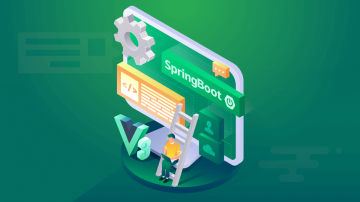单元测试
单元测试注意事项
测试方法必须用@Test修饰
测试方法必须使用public void修饰,不能带参数
一般使用单元测试会新建一个test目录存放测试代码,在生产部署时只要将test代码目录删除即可
测试代码的包应该和被测试代码的包结构一致
测试单元中的每个方法必须可以独立测试,方法间不能有任何依赖
测试类一般用Test作为类名后缀
测试放一般使用test作为方法名前缀
常用注解
@Test:将一个普通方法修饰称一个测试方法
@Test(excepted==xx.class) 忽略某异常类
@Test(timeout=毫秒数) 测试方法执行时间是否符合预期
@BeforeClass:会在所有方法执行前执行
@Afterclass:会在所有方法执行后执行
@Before:在每一个测试方法被运行前执行一次
@After:在每一个测试方法运行后执行一次
@Ignore:修饰的方法会被测试运行器忽略
@RunWith:更改测试运行器
@RunWith(SpringRunner.class)
Spring Boot 单元测试
Spring Boot 提供了两个包来支持单元测试:
spring-boot-test:包含测试的核心
spring-boot-test-autoconfigure:用来支持测试的自动配置
配置相关注解
@SpringBootTest
它能够测试 SpringApplication,因为 SpringBoot 程序入口是SpringApplication,基本所有配置都会通过入口类去加载,也可以通过 classes 属性设置应用程序入口类,webEnvironment 可以设置 web 测试环境,可选属性有:
MOCK:提供一个模拟的Servlet环境,内置的Servlet容器没有启动,配合@AutoConfigureMockMvc使用
RANDOM_PORT:提供真实的Servlet环境,启动内置容器,随即端口
DEFINED_PORT:配置真实Servlet环境,使用默认端口
NONE:提供跟Mock一样不真实的Servlet环境
@LocalServerPort
注解在属性上,注入端口号
@ActiveProfiles(profiles = "test")
指定多环境测试时的环境配置
@Slf4j
如果不想每次都写下面代码可以用注解@Slf4j
private final Logger logger = LoggerFactory.getLogger(XXX.class);
@AutoConfigureMockMvc
配合 @SpringBootTest 注入一个 MockMvc 实例
@WebAppConfiguration
声明一个用于测试的 ApplicationContext 来模拟 ServletContext
测试例子
测试 REST 接口
测试 REST 接口可以配合 TestRestTemplate
@RunWith(SpringRunner.class)@SpringBootTest(classes = Application.class,webEnvironment = WebEnvironment.RANDOM_PORT)public class RandomPortExampleTests { @Autowired
private TestRestTemplate restTemplate; @Test
public void exampleTest() {
String body = this.restTemplate.getForObject("/", String.class);
assertThat(body).isEqualTo("Hello World");
}
}测试 Spring MVC
测试 SpringMVC Controller 可以使用 @WebMvcTEst,它会自动配置 MockMvc,Mock MVC 提供了一种方法来测试 MVC Controller,而不用启动完整的 HTTP Server
@Slf4j@RunWith(SpringRunner.class)@SpringBootTest(classes = Application.class)@AutoConfigureMockMvcpublic class SessionControllerTest { @Autowired
private MockMvc mvc; private ObjectMapper objectMapper = new ObjectMapper(); @Test
public void testLogin() throws Exception {
LoginDTO loginDTO = new LoginDTO();
loginDTO.setUsername("linyuan");
loginDTO.setPassword("123456"); byte[] body = objectMapper.writeValueAsBytes(loginDTO);
String resp = this.mvc.perform(
post("/session") //请求的URL
.content(body) //请求的数据
.param("请求的参数名","参数值") //请求的参数
.contentType(MediaType.APPLICATION_JSON) //请求数据的格式
.accept(MediaType.APPLICATION_JSON) //接收返回数据的格式
).andExpect(status().isOk()) //验证执行结果状态码
.andDo(print()) //请求结果处理,输出请求结果
.andReturn().getResponse().getContentAsString(); //最后返回的结果,将数据转换为字符串
System.out.println(resp);
}
}----- 持续更新中 -----
作者:林塬
链接:https://www.jianshu.com/p/48273b0bb0df

 随时随地看视频
随时随地看视频




